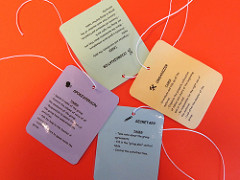Cooperative grouping
By Mary Bigelow
Posted on 2017-05-31
 In science classes, do students work better in random groups or with their friends? I’m a student teacher in middle school. – S., Arizona
In science classes, do students work better in random groups or with their friends? I’m a student teacher in middle school. – S., Arizona
Most teachers will tell you there is no best way to set up groups. There are many variables, including the age of the students, the structure of the investigation, the students’ experience levels, and the classroom social climate.
Thoughts from my experience in middle school:
- Use random assignment for the first few activities. You can observe the students’ interpersonal skills, work habits, and which students do and do not work well together.
- With student-selected groups, I was concerned about the students who were selected last (or not at all) and that students wouldn’t learn how to work with a variety of people. Sometimes friends would focus more on social aspects.
- I found heterogeneous grouping by ability worked best for my classes most of the time, and single-gender groups provided more opportunities for equitable student participation.
- I usually structured the groups, changing them periodically. Sometimes, students with an intense interest on a topic worked together.
- Although I rotated cooperative roles, I would usually try to keep the groups intact for a unit. This also saved time, because the students knew who their partners were and which lab table was theirs.
- Check with the teacher of special needs students to determine any accommodations specified in their individual education plans.
- Regardless of how you structure the groups, you may need to model what cooperative behavior looks like, and work with them on appropriate language.
You have a great opportunity for action research as you try different configurations and note which ones seem to work better for your students.
Photo: https://www.flickr.com/photos/ielesvinyes/6725332973
Disclaimer: The views expressed in this blog post are those of the author(s) and do not necessarily reflect the official position of the National Science Teaching Association (NSTA).


